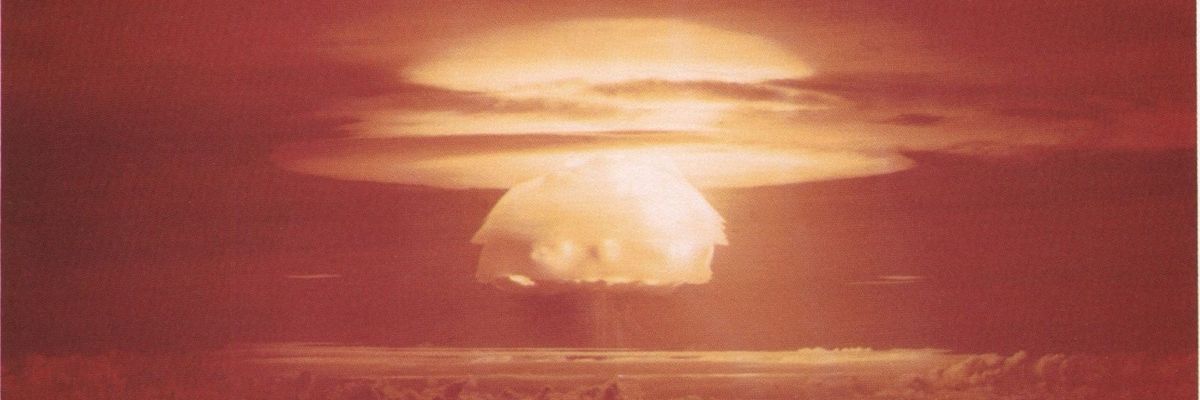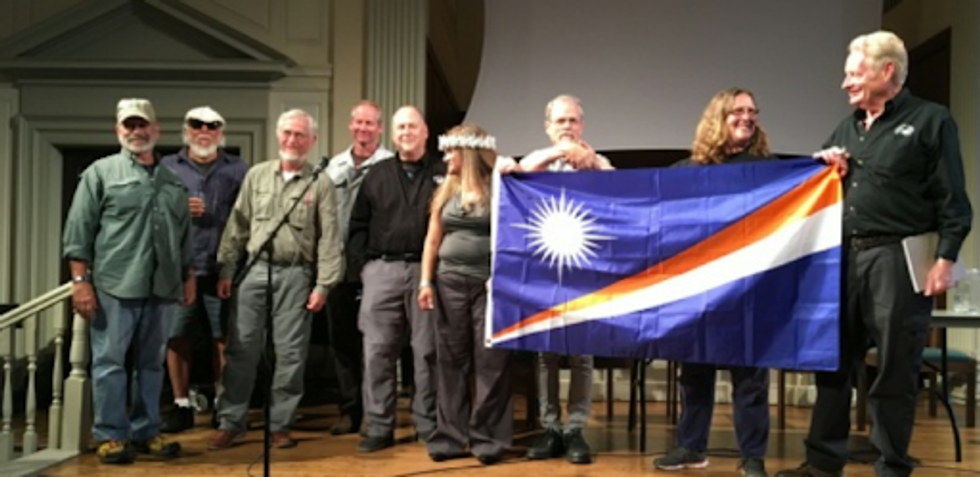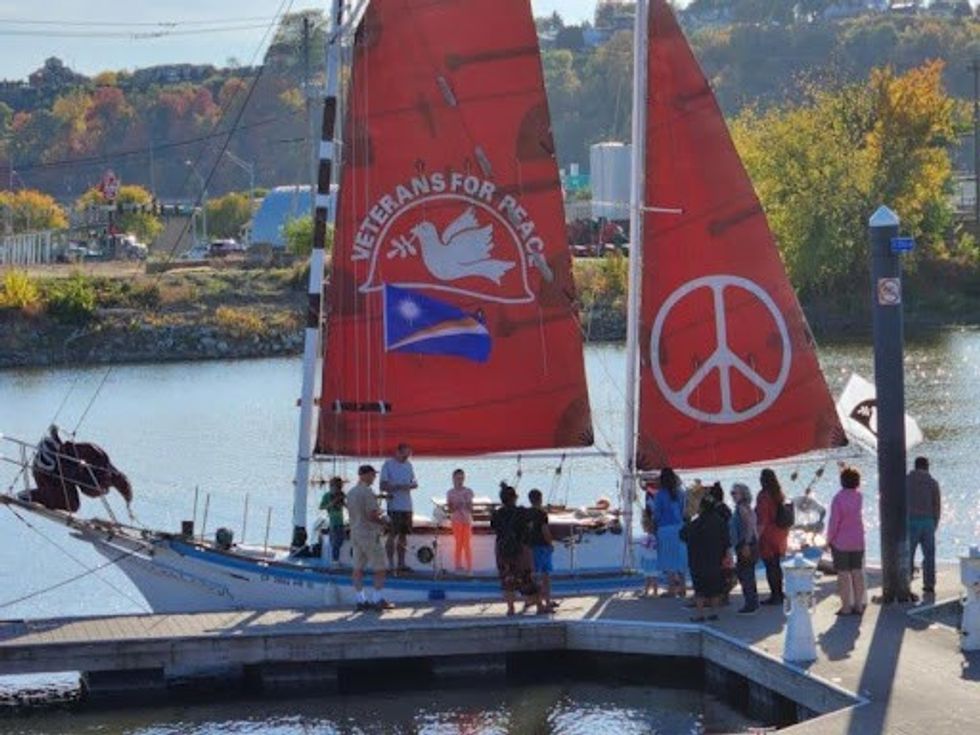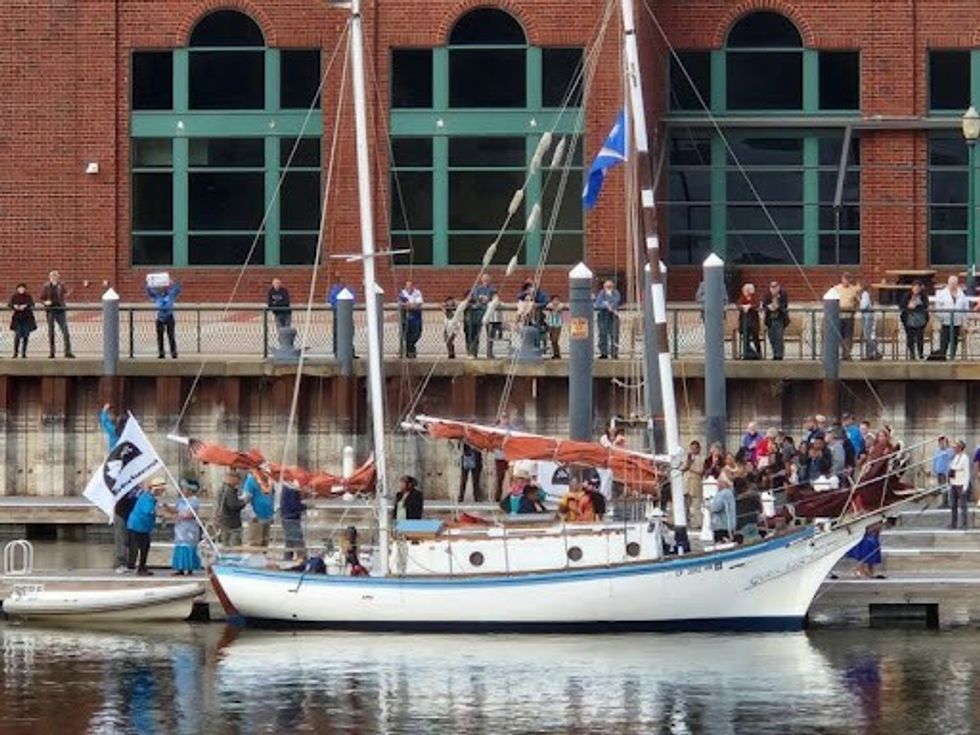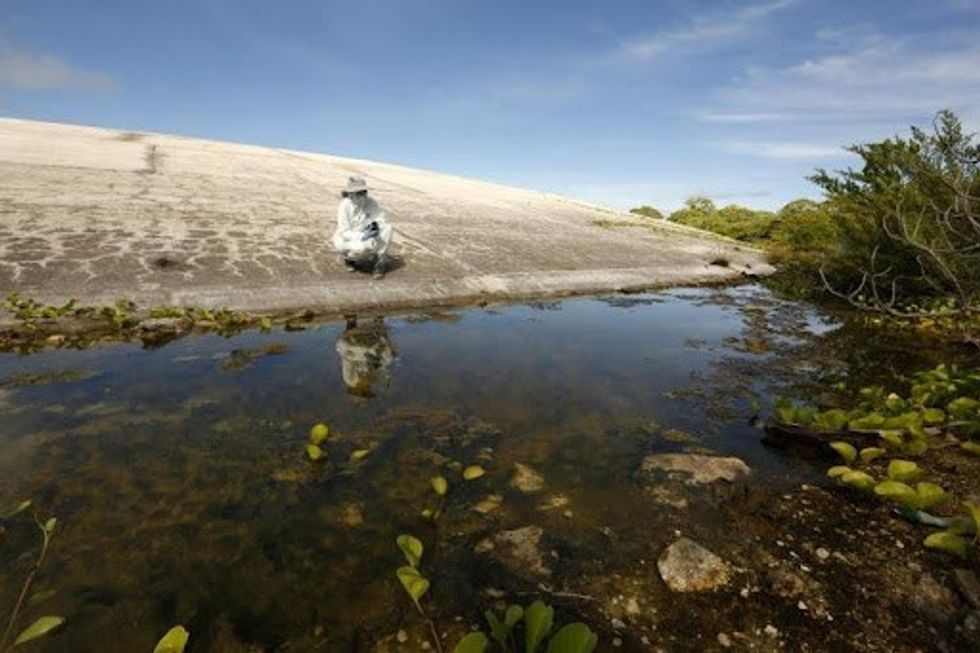March 1 marks 70 years since the U.S. used its biggest ever nuclear weapon—on Bikini Atoll in the Marshall Islands. The bomb was 15 megatons, 1,000 times more powerful than the bomb dropped on Hiroshima.
On this day we remember the victims of the Castle Bravo nuclear blast and all other victims of the nuclear era, which has brought untold pain, death, and damage, affecting both people and planet in profound ways.
There’s no better way to remember Castle Bravo day than by taking action on behalf of the victims of radiation and pushing for the abolition of nuclear weapons.
Between 1946 and 1958 the U.S. detonated 67 nuclear weapons in the Marshall Islands. The blasts vaporized whole islands, carved craters into the shallow lagoons, and exiled hundreds of people from their homes. The Castle Bravo blast was the largest of all, sending particulate and gaseous fallout around the entire planet.
Stopping the Nuclear Weapons Tests
Concerned U.S. citizens tried to stop the tests by contacting Congress, the president, and the press and by demonstrating on campuses and in the streets. They weren’t successful through these conventional means, so in 1958 four Quakers bought a small sailboat, the Golden Rule, and attempted to sail her right into the testing zone in the Marshall Islands.
The crew of the Golden Rule was arrested in Honolulu and could not continue. A second boat, the Phoenix of Hiroshima, took the baton and completed the sail into the Marshall Islands, resulting in the arrest of the Phoenix’s captain. The actions and arrests of these crews spurred a massive public outcry that finally led to the Limited Test Ban Treaty of 1963.
The
Golden Rule also inspired the founding of
Greenpeace in 1971, whose first mission was to sail to Amchitka Island, Alaska, to stop nuclear weapons testing. The U.S. Navy stopped Greenpeace, too. The nuclear bomb the group had come to stop was detonated, but the subsequent tests were canceled and the U.S. stopped the entire Amchitka nuclear test program.
Rongelap Relocation
Greenpeace and her vessel, the Rainbow Warrior, played an important role in the Marshall Islands in 1985 when Rongelap residents asked Greenpeace to help them relocate to a new home. Both Bikini and Enewetak’s people were evacuated from their island homes prior to the nuclear tests, hoping to avoid radioactive fallout. But the inhabitants of Rongelap (150 kilometers away) were not so fortunate. Within four hours of the Castle Bravo explosion, fallout was settling on the island. A fine white ash landed on the heads and bare arms of people standing in the open. It dissolved into water supplies and drifted into houses.
With double the usual miscarriages and other health problems caused by the Castle Bravo test, the people of Rongelap begged the U.S. government to evacuate them. But they were now human “guinea pigs,” and U.S. scientists wanted to study the effects of radiation on the population.
Finally, in 1985, Greenpeace made three 180 kilometer trips from Rongelap to Mejato (in the Kwajalein Atoll), taking 300 islanders to safety.
New Relationships Built: Marshallese and the Golden Rule
The Golden Rule disappeared from public view in 1958 and eventually sank in Humboldt Bay in far northern California in 2010. After a five-year rebuild, she was re-launched and returned to her anti-nuclear mission by Veterans For Peace.
In 2016 when the Golden Rule visited Portland, Oregon, we visited with a Marshallese group who built a traditional sailing canoe. Most people in and from the Marshall Islands have never heard of the Golden Rule or the Phoenix of Hiroshima. However, when they hear the story, they are very excited that people attempted to help them all those years ago.

Kiana Juda-Angelo presented the Golden Rule Project with a Marshallese flag at our public presentation in Portland, Oregon in 2016.

Hawaii has one of the largest populations of Marshall Islanders in the U.S. It has been our pleasure to meet them and commemorate Nuclear Victims Remembrance Day in Honolulu in 2019.

In 2022, as the Golden Rule sailed down the Mississippi River along the “Great Loop,” we passed through Dubuque, Iowa, where there is a community of 800 or so Marshall Islanders. Veterans For Peace member Art Roche told them the story of the Golden Rule’s 1958 voyage and that we were bringing the boat to Dubuque! They greeted us with leis and songs of sweet harmony in their traditional clothing. We enjoyed dancing, speeches, and song for a whole weekend.
The Marshall Islands and the United States Today

When the Golden Rule was in New York City we met the Permanent United Nations Representative from the Republic of the Marshall Islands, Ambassador Amatlain Elizabeth Kabua. She explained that there were several issues that could be improved:
- Although the Marshallese have increased radiation-caused cancer, there is no chemotherapy facility anywhere in the Marshall Islands.
- Although Marshall Islanders, like the Indigenous people in the United States, volunteer at a proportionately high rate for the U.S. military, there is no VA clinic in the Marshall Islands.
For the last three decades, Marshall Islanders have sought compensation from the U.S. for the health and environmental effects of nuclear testing. They’ve been denied standing to sue in U.S. courts, and Congress has declined their requests. The Compact of Free Association (COFA) which governs the relationship between the U.S., Palau, Micronesia, and the Republic of the Marshall Islands was renegotiated in 2023. However, Congress has yet to fund the $7 billion dollars that was approved.
The Marshall Islands are also being hit hard by global warming and slowly sinking into the rising seas. This will submerge a highly radioactive nuclear waste dump, Runit dome. Runit dome contains nuclear contamination from both the Marshall Islands and the Nevada test site.
Take Action

On March 1, let’s remember all of the victims of radiation—from Hiroshima and Nagasaki; nuclear testing areas; and uranium mining, milling, processing, and disposal sites.
Let your senators and representative know that you support fully funding the Compact of Free Association (COFA).
Tell them that you support the Radiation Exposure Compensation Act, including its expansion to include those people exposed from the Trinity test in New Mexico in 1945.
Work for the U.S. to sign the U.N. Treaty on the Prohibition of Nuclear Weapons (TPNW), which includes compensation for victims of radiation. The International Campaign to Abolish Nuclear Weapons, ICAN, which won the Nobel Peace Prize in 2017, is working hard to get all nations to sign the treaty.
Back from the Brink urges the U.S. government to:
- Actively pursue a verifiable agreement among nuclear-armed states to eliminate their nuclear arsenals (they support the TPNW);
- Renounce the option of using nuclear weapons first;
- End the sole, unchecked authority of any U.S. president to launch a nuclear attack;
- Take U.S. nuclear weapons off hair-trigger alert; and
- Cancel the plan to replace the entire U.S. nuclear arsenal with enhanced weapons.
Their website has an advocacy toolkit and sample scripts for talking with the press and policy makers.
Two important bills are in Congress: H. Res 77 would implement the Back from the Brink Measures. HR 2775 would move money from nuclear weapons manufacturing to funding fossil-free, nuclear-free energy as well as human needs. Ask your representative to sponsor these bills and your senators to introduce a companion bill!
There’s no better way to remember Castle Bravo day than by taking action on behalf of the victims of radiation and pushing for the abolition of nuclear weapons.



